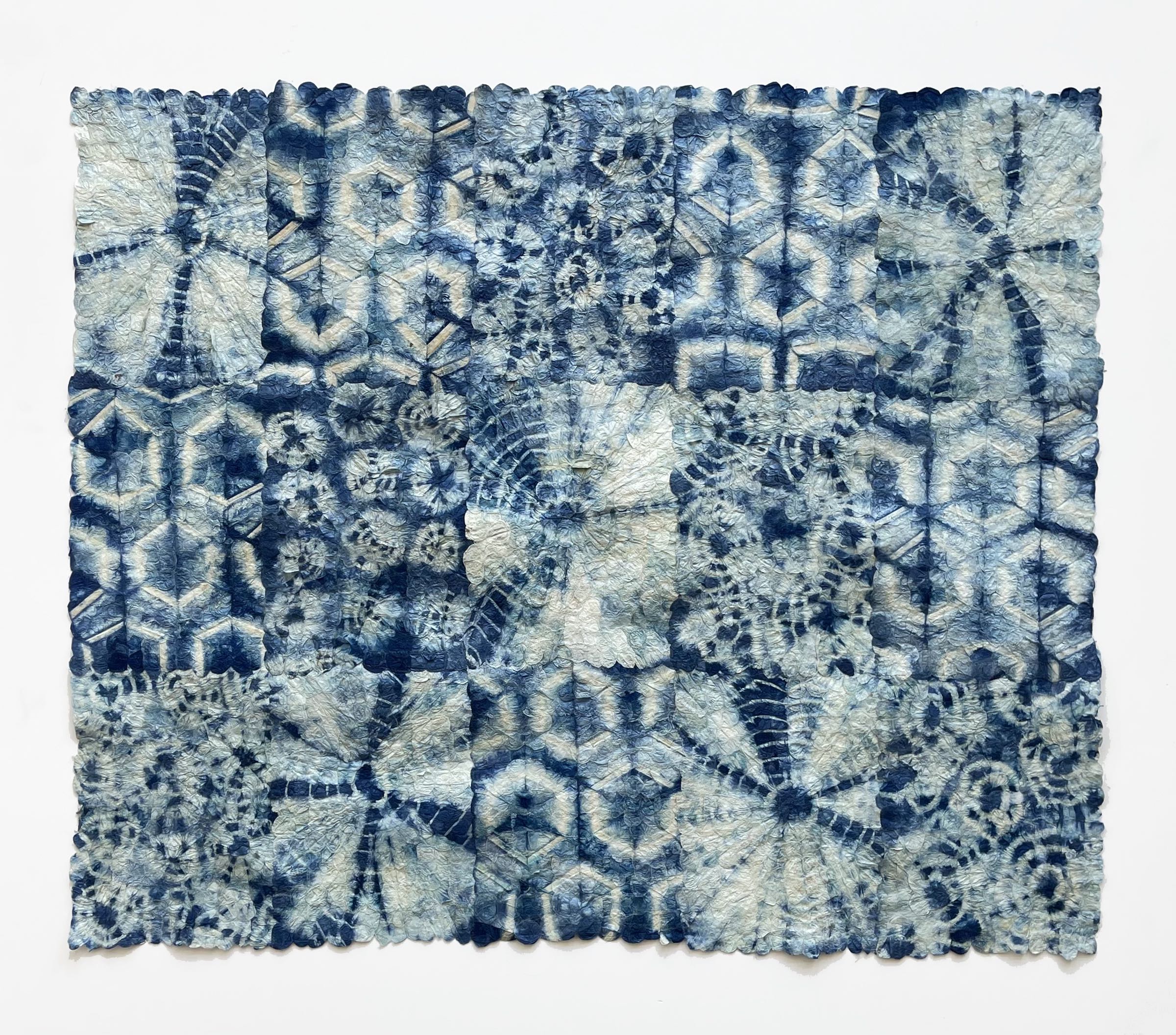
- This event has passed.
Docey Lewis-Living Threads
November 4, 2022 @ 6:00 pm - December 11, 2022 @ 6:00 pm
Free
Docey Lewis’s Living Threads takes the viewer on a journey of contradiction. Our technologically enhanced culture facilitates our ability to see and create both real and virtual connection while relentlessly making us more aware of the threats humanity faces. Seeking balance, we alternatively seesaw between retreating to our cocoons and interconnecting.
Among the many threats we face is species loss. The exhibit highlights several extinct or threatened species in Posey County. The pre-human ecosystem in our area was abundantly populated and in natural balance. After man settled along the Wabash and elsewhere, this utopian equilibrium eroded to the point of dystopia. The world now faces environmental, social and economic catastrophe, while our perverted material culture still spreads an unrealistic ethos of fossil fuel powered unlimited growth, fast fashion, junk food and surveillance capitalism.
The materials used in creating artworks for Living Threads have as much meaning as the pieces themselves. “I have been entangled for many years in the cultures, natural materials and co-creations of faraway communities who have had to pivot from utilitarian and ritual use of their materials and techniques to making salable products for a global market,’ says Lewis. “Along the way, a large body of samples and materials have piled up in my studio. During the pandemic, I began to untangle the accumulation and recycle it into artwork. Many hands have touched the raw materials, and I celebrate the living farmers and artisans whose participation has made this work possible. Connections with communities and all living things are represented in this collaborative body of work.”
About Docey Lewis
Lewis had her first solo exhibition in the late 1960s—not in a gallery or museum, but in a library 30 miles south of San Francisco. She showed a selection of hand woven, abstract textiles she had made on a hand-built loom. The show sold out.
Yet, rather than pursuing an art practice, Lewis made a series of unexpected choices that led her on a serpentine, half-century journey around the globe. While mastering the innumerable methods humans have concocted to make textiles, and empowering hundreds of other women artisans in the weaving workshops she set up in the Philippines, Nepal, Morocco, Indonesia, and Bangladesh, Lewis dined with royalty, collaborated with legends, and built an entrepreneurial empire.
Now in her 70s, Lewis has returned to the art studio—not in San Francisco, New York, or one of the other exotic locales she has variously called home. Instead, she now works in a modest, light-filled studio above a locally celebrated wine bar and coffee shop, in a historic building in New Harmony, Indiana. Amid wafts of fresh soups and sounds of evening cheer, Lewis tries to make peace with her past, weaving intricate, layered abstractions that literally pull at the threads of her personal history.
Among the many ironies of Lewis’s story is that her ancestors, namely Robert Owen, embarked on a mission to establish a Utopia in New Harmony—based on the moral principles of education and total equality. This concept of fostering the best qualities of humanity has been passed down from generation to generation ever since and is embedded in Lewis’s life. With her exhibition, Living Threads, Lewis is drawing our attention to the natural world, our relationship to the environment as caretakers and our ability to alter it.
Open through December 11, this exhibit is part of our Social Alchemy project. With this multifaceted, multiyear project, Indianapolis-based arts organization Big Car Collaborative — with our partners, the University of Southern Indiana, Indiana State Museum, Historic New Harmony, the New Harmony Gallery of Contemporary Art and others –– have created a series of radio shows, exhibits, and conversations exploring, learning, and sharing how utopia has informed places and pursuits over time.
Social Alchemy explores historical and contemporary examples of utopian experiments, fictional utopias and dystopias, and social and cooperative-living design projects (linking back to our affordable artist housing program on our block in Indianapolis). Through a variety of public programs — made possible with support from Indiana Humanities and Efroymson Family Fund — it offers a deeper understanding of the relationship between the built environment and social good.
Image:Warbler Quilt
The Bombyx mori cocoons used to make each of shibori dyed rectangles are cultivated in the Highlands of Madagascar and delivered to the SEPALIM workshop(a non-governmental organization focused on conservation-based livelihood development.) in Maroantsetra, twice a year. Before making the long trip by boat and motorcycle to deliver giant sacks of cocoons, farmers slice open each cocoon and use the dried caterpillar as feed for their chickens. Nothing goes to waste. Each cocoon is trimmed, ironed flat and sewn one by one to create a textile.
